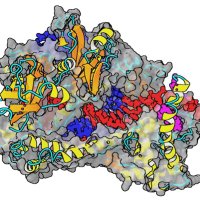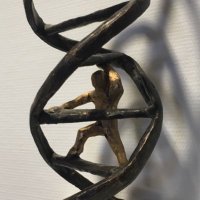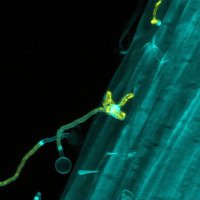
Albada Lab
@nanochembiol
Albada lab @WUR.
Bio-Organic / Bioconjugation / Click / Peptide Chemistry & DNA Nanotechnology & Chemical Biology. VR applications in education.
ID: 828508572719906816
http://www.nanochemicalbiology.com 06-02-2017 07:40:11
253 Tweet
228 Followers
245 Following





Very happy to share this result from a fresh collaboration with the lab of cees dekker. During our work on synthetic peptide phytohormones, we witnessed first-hand the difficulty of identifying sulfotyrosines (sTyr) PTMs on these peptides. (1/5) Wageningen U&R Organic Chemistry PhDs


Therefore, I asked Cees if nanopores could not detect sTyr but also to distinguish sTyr from pTyr using nanopore sequencing. Our PhD-student Jasper van de Sande synthesized a library of mutants of the prominent peptide hormone phytosulfokine (PSK), and Xiuqi Chen... (3/5)




Here it is, the first bond that strengthens under stress (Nature Chemistry). Excellent work by Martijn van Galen, Annemarie Bok and Taieesa Peshkovsky, in collaboration with Joris Sprakel green mechanobiology and Jasper van der Gucht! Wageningen U&R Physical Chemistry and Soft Matter - WUR ORC_WUR nature.com/articles/s4155…


8y in the making and out now. Very proud of this, in collaboration with Albada Lab, by fantastic phd student Martijn van Galen. We managed to engineer one of Nature’s most clever molecular mechanobiology tool from the bottom up: de novo-catch bonds…a 🧵 nature.com/articles/s4155…

Happy to share our new paper in Nature Chemical Biology! Photoproximity labeling of endogenous receptors in the live mouse brain in minutes nature.com/articles/s4158…
